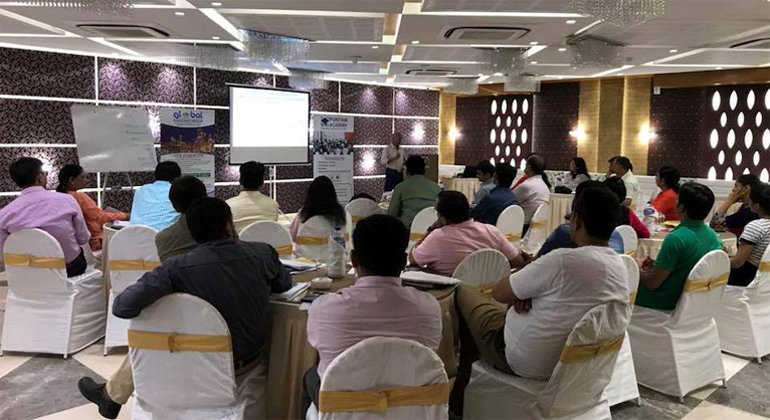Evaluation of Measurement Uncertainty as per ISO/IEC 17025:2017
CLT106 Type: Class Room Training

Description
In any manufacturing activity, obtaining accurate, reliable and traceable measurements is one of the basic requirements in order to archive required level of product quality. No measurement can be exact and every measurement is subject to some uncertainty. Uncertainty of measurement is the doubt that exists about the result of any measurement. A measured value is complete only if it is accompanied by a statement of the uncertainty associated with it. Measurement uncertainties can occur due to various sources such as the measuring instrument, the part / component being measured, environmental conditions, the operator, and / or from other sources. The use of good practices, such as traceable calibration, careful calculation, good record keeping, and checking can reduce measurement uncertainties.
Punyam Academy has announced two-day training program on Evaluation of Measurement Uncertainty as per ISO 17025. The program will be conducted in the form of theoretical training, followed by practical calculations for evaluation of measurement uncertainty in chemical and mechanical testing as well as calibration.
Contents of Training On Evaluation of Measurement Uncertainty
- Terms and conditions – the basics of evaluation of measurement uncertainty.
- Concept and basic statistical theory of evaluation of measurement uncertainty in quality assurances practices.
- Statistics used in evaluation of measurement uncertainty, including types of distribution, such as Normal, Rectangular, Triangular and U-shaped distribution with practical examples.
- Identification and evaluation of measurement uncertainty factors in testing and calibration, including detailed discussion on sensitivity co–efficient, degree of freedom, effective degree of freedom, and identification of “k” value.
- Concept of Calibration Measurement Capability (CMC).
- Statement of conformity to specification or standard, Decision Rules, Level of Risk (such as, false accept and false reject, and statistical assumptions) associated with the decision rule employed.
- Steps involved in the evaluation of measurement uncertainty, such as Type A calculation, Type B calculation, calculation of combined uncertainty, calculation of effective degree of freedom, calculation of expanded uncertainty at 95% confidence level, and how to report the measurement uncertainty in the calibration certificate.
- Practical demonstration of evaluation of measurement uncertainty for following:
- Chemical testing laboratories,
- Mechanical testing laboratories, and
- Mechanical, Thermal and Electro–technical calibration
Course Objectives
The objectives of this two-day classroom training course are:
- To create awareness and practical experience of evaluation of measurement uncertainty.
- To create competence in the participants for evaluation of measurement uncertainty.
- To create confidence in the participants for evaluation of measurement uncertainty.
- To discuss the practical examples of measurement uncertainty.
- To know how to use Excel sheet for easy calculation of measurement uncertainty.
Benefits of Evaluation of Measurement Uncertainty Training
At the end of the two-day training program you will be able to:
- Understand the difference between measurement uncertainty and accuracy.
- Understand the different types of uncertainty and calculations involved.
- Understand the difference between measurement uncertainty and calibration measurement capability (CMC).
- Select calibration agency based on its CMC.
- Understand decision rule and associated risk due to measurement uncertainty.
- Evaluate measurement uncertainty.
- StartsComing Soon!
- Duration2 Days
- Seats Available25
- Price (USD) ₹7,000
- DOWNLOAD COURSE DEMO
- TypeClass Room Training
- LanguageEnglish









































































